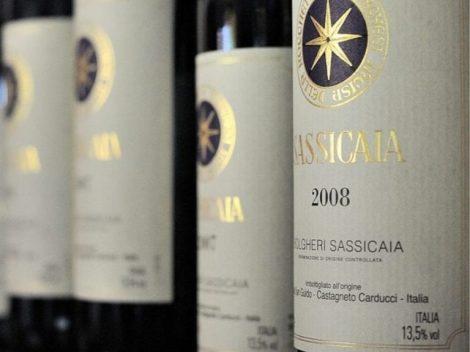In the first nine months of 2024, made-in-Italy wine exports reached nearly €6 billion. After a slow start to the year, the third quarter maintained a positive trend for exported wine values. The €5.9 billion recorded from January to September marks a 5.63% increase compared to the same period in 2023. This growth trajectory suggests that total exports could surpass €8 billion by year-end for the first time. According to ISTAT data on foreign trade, 1.6 billion litres were sold during this period, a 3.42% volume increase, with an average price of €3.68 per litre.
There was also a significant increase in wine imports to Italy: 231 million litres compared to 96 million during the same period in 2023, with spending rising from €338 million to €409 million.
Sparkling wines once again played a key role in Italy's export success, growing at twice the rate of still wines. In September 2024 alone, Italy exported €734 million worth of wine, of which €230 million came from sparkling wines—an increase of over 16% compared to September 2023. Excluding sparkling wines, Italy's overall growth rate would have been flat, at just +0.5%.
Trends in sparkling wine
National sparkling wine exports reached €1.7 billion, growing by 9.4% in value and 13% in volume (397 million litres) during the first nine months of 2024. This growth suggests a decline in average price per litre, likely due to higher sales of lower-priced wines.
Prosecco, including DOC Prosecco and DOCG Conegliano Valdobbiadene, led the charge, with volumes increasing by 16% to 296 million litres, generating €1.3 billion in revenue—a 12% growth. Meanwhile, Asti DOC remained steady at €111 million, with approximately 30 million litres sold abroad.
However, other DOC sparkling wines, such as Franciacorta, Alta Langa, and Trentodoc, saw declines in both volume (from 10.6 to 9.1 million litres) and value (from €72.8 million to €64.1 million, down 12%).

Still bottled reds and whites
Still bottled white DOC wines from regions like Veneto, Trentino-Alto Adige, Friuli Venezia Giulia, Tuscany, Lazio, and Sicily saw a 6% value increase, reaching €530 million. Volumes rose from 132 to 140 million litres, also up 6%.
Still bottled red DOC wines from Veneto, Piedmont, Tuscany, Sicily, Trentino-Alto Adige achieved a 6.4% value growth to €1 billion, with a 2.5% volume increase to 120 million litres.
By packaging format, bottled wine grew 4.86% in value to €3.88 billion, with volumes rising from 853 to 891 million litres. Wines sold in formats between 2 and 10 litres (including bag-in-box) dropped by over 5% in volume to 35 million litres, with revenue falling from €85.7 million to €79.3 million (-7.5%).

Key markets: growth in the US, Brazil, and Russia; decline in Switzerland
Among key export markets, the US performed well, growing by 8.5% to €1.4 billion over nine months. Germany followed with €867 million (+4.7%), while Canada showed a sharp recovery with €336 million (+17%). Other markets included France (€231 million, +2.67%), the Netherlands (€177 million, +6.6%), and Russia (€173 million, a robust +63%).
Japan (€146 million, +4.2%) and Sweden (€144 million, +2.8%) also grew. Meanwhile, the UK (€602 million) and Belgium (€161 million) remained stable, but Switzerland saw a decline to €288 million (-3%).
Brazil, Italy’s top Mercosur market, reached €31.3 million in wine imports, up 22%. Conversely, China dropped by 11%, falling to €62 million in the first nine months of 2024.


 In Turkey, the Michelin Guide Awards also recognize an Italian restaurant—but not with a Star
In Turkey, the Michelin Guide Awards also recognize an Italian restaurant—but not with a Star An interesting Japanese fine dining restaurant near Turin
An interesting Japanese fine dining restaurant near Turin There’s nothing better than a dinner based on cheese: here are the wines to pair (not just reds)
There’s nothing better than a dinner based on cheese: here are the wines to pair (not just reds) The 10 best Trebbiano d’Abruzzo wines selected by Gambero Rosso (with a new Tre Bicchieri)
The 10 best Trebbiano d’Abruzzo wines selected by Gambero Rosso (with a new Tre Bicchieri) Does organic wine still appeal to consumers? France questions the sector’s future
Does organic wine still appeal to consumers? France questions the sector’s future







